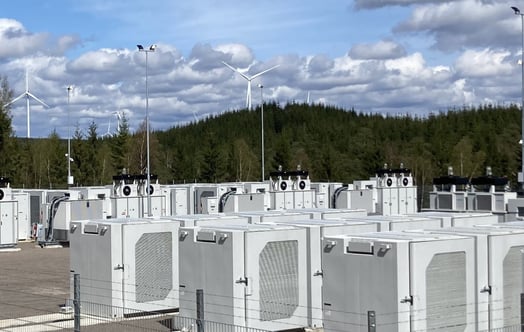Vattenfall collaborates with Eramet Norway to support the Norwegian electricity grid
Through the collaboration between Vattenfall, Sympower and Statnett, ferro-alloy company Eramet Norway has gained access to FFR (Fast Frequency Reserve) between May and October 2021. This means that they can contribute to a stable power grid, not only in Norway, but throughout the entire Nordic electricity grid if a power failure occurs.
Energy sources such as wind and solar power put new demands on the electricity system. As more weather-dependent energy increases, larger reserves are required. Nordic system operators have therefore agreed to trade in synthetic inertia or fast frequency reserve (FFR) to ensure electricity network stability. This solution means that substantial electricity consumers such as Eramet Norway can quickly reduce their electricity consumption and help to achieve stability in the power grid when there is an imbalance.
"FFR is a necessary component if we want a future power system consisting of more renewable electricity. Norway has recently expanded its cable capacity to Germany and can thus export more fossil-free electricity from hydro power to the continent and import electricity when demands are high in the Nordic region. If a fault occurs in the cable, it can lead to a sudden shortage, for which FFR is a quick and effective solution," says Viktor Gårdö, Manager Flexibility Products at Vattenfall.
Vattenfall’s goal is to enable fossil-free living within one generation. "It’s a win-win situation. The customer contributes to a fossil-free society and gets paid for it," says Viktor Gårdö.
Statnett, the system operator of the Norwegian power system, has bought 119 MW to be used for frequency control (at a value of approx. NOK 22.5 million). Of these, Vattenfall as the single largest operator is responsible for 58 MW, together with technology supplier Sympower. The deal is worth approximately NOK 11.5 million. Eramet Norway, an electricity customer of Vattenfall, produces alloys for the world's industrial industry. They have an FFR readiness of about 400 hours.
"Eramet Norway’s smelting furnaces in Kvinesdal, Porsgrunn and Sauda have an annual consumption of around 2.0 TWh and can make up to 58 MW of electricity available to the power grid in just 0.5 seconds. It felt natural to be a part of FFR and support the electricity grid if necessary. This is a new, forward-looking technology that is at the same time challenging for a basic industry like ours," says Baard Aasrum, Senior Specialist at Eramet Norway.
The power system depends on a balance between production and consumption. When the system is in balance, the frequency is 50.00 Hz. If there are major disturbances in the frequency, it can cause faults in electronic equipment and power failure.
About Eramet Norway
Eramet Norway is part of the French mining and metallurgy company Eramet, Besides smelters they have as well an R&D department in Trondheim. The company is a world-leading producer of manganese alloys which is an important input factor in the manufacture of steel. Eramet Norway has approximately 530 employees and a total turnover of about NOK 6 billion (2019).
For further information, please contact:
Heidi Stenström, Press contact Vattenfall +46 8 739 50 10, press@vattenfall.com
Kåre Bjarte Bjelland, Director of Communications Eramet Norway, +47 916 36 493, kare-bjarte.bjelland@eramet.com



